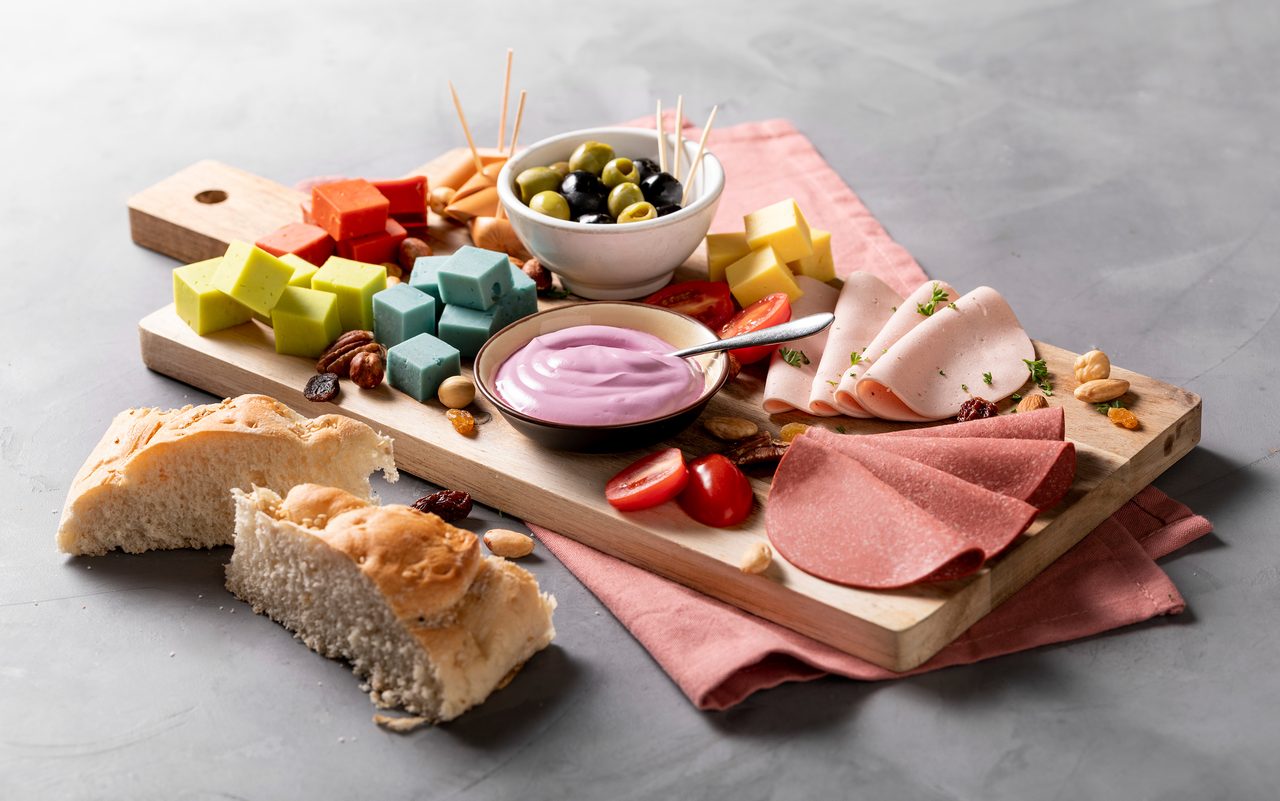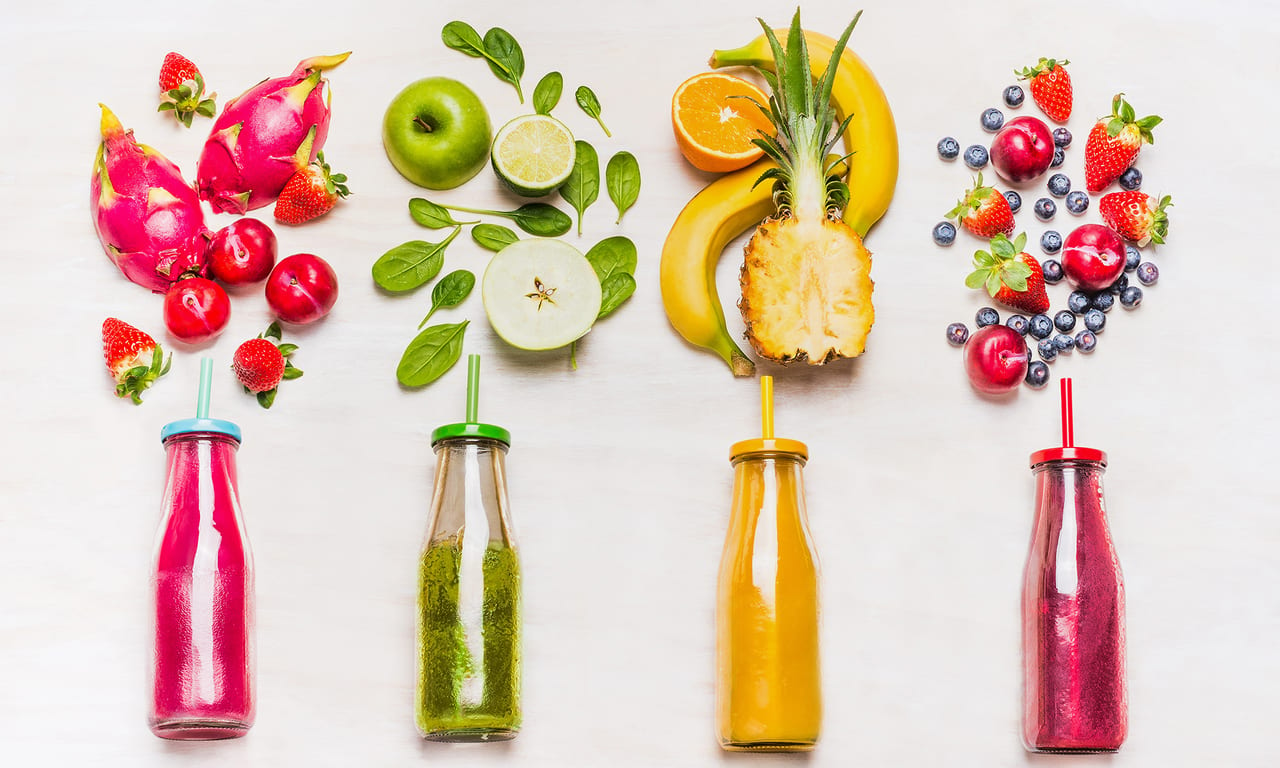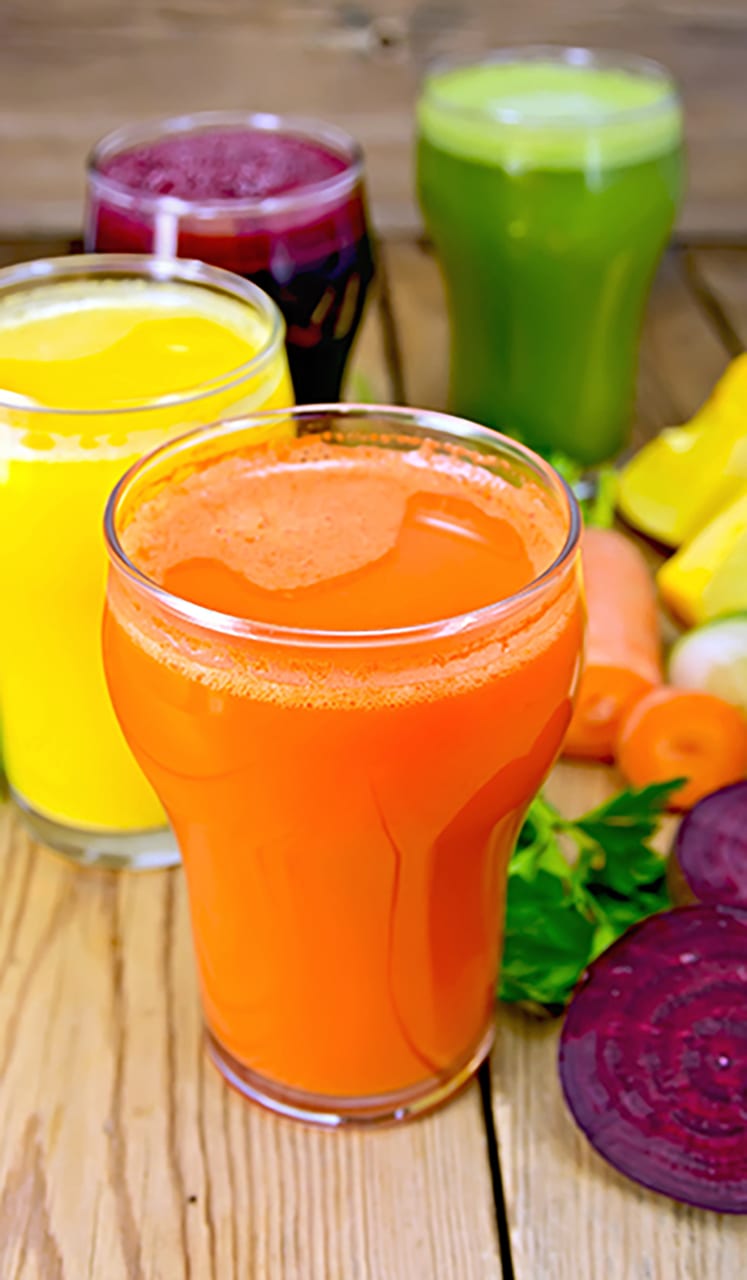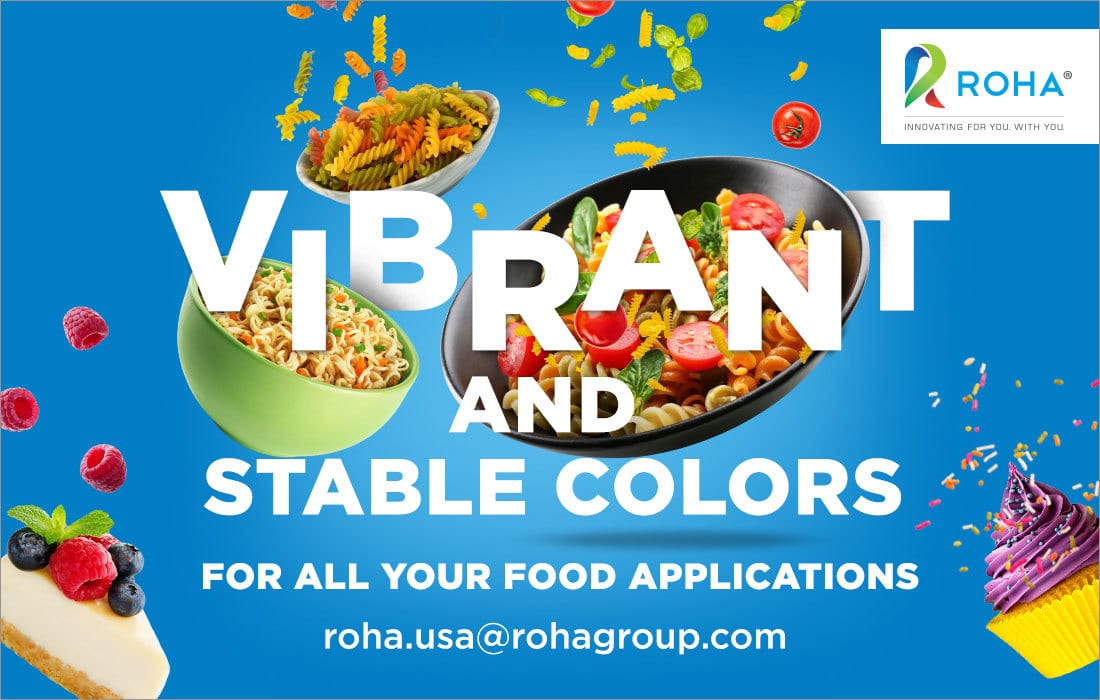2022
Predictions
COLORS part 2
The future of natural food color innovation is focused on identifying new and safe agricultural sources of desirable pigments. It also includes fostering the sustainable cultivation of these inputs via investment in agricultural infrastructure. From there, the key is to develop cost-effective, clean extraction techniques for harvesting the natural colorants on an industrial scale.
Developers and manufacturers can continue to expect demand for natural color sources to rise.
Color Shift - Part 2

Artificial food color usage continues to decline, reinforcing that consumers are reading labels and clean-label is here to stay. Photo courtesy of: GNT Group, BV/Exberry
By OLIVIA CONRAD, Contributing Technical Editor

The technology to have natural fruit- and vegetable-derived colorants stay true and vivid keeps advancing. Photo courtesy of: Food Ingredient Solutions Inc.
Butterfly pea flower extract, which was granted FDA approval for use as a color additive in September of this year, is one example of a new wave of naturally derived food colors. This natural color is heat-stable and water-soluble, yet retains high concentrations of anthocyanins, which give it a bright blue color. The versatility and effectiveness of this natural blue shade will significantly streamline the R&D process for blue-, purple-, and green-hued products.
Similarly, other major food color shade ranges, such as caramels and whites, are getting a natural makeover. This is coming about as consumer concerns persist around the safety of certain artificial color ingredients, such as 4-methylimidazole (4-MEI) and titanium dioxide (TiO2).
Brown, tan, and gold shades of classic caramels are being replaced with naturally brown pigments from foodstuffs such as wheat, apples, and upcycled grains. And according to Mintel, TiO2 usage for white color in foods has dropped by nearly 40% since 2010. Meanwhile, the intense white pigment of TiO2 had been difficult to match, with calcium carbonate being the closest replacement. There was no plant-based counterpart until a rice starch-derived white was developed only a few years ago. The new whites came just in time for Europe, which recently declared a ban on TiO2 in foods beginning January 1, 2022.

Natural colors are now appearing in about 75% of new food product launches, driving clean-label reformulation of many foods and beverages. Photo courtesy of: ROHA Dyechem Pvt. Ltd.


The number of pigment-packed raw input sources, such as beets, berries, carrots, tomatoes, turmeric, paprika, spirulina, and certain flowers, such as annatto and marigold, will continue to expand, serving prominently as natural food colors in the coming years.
Looking to 2022 and beyond, consumer preferences will continue to drive the market toward embracing a cleaner, more natural food color portfolio. Developers and manufacturers can expect to see high demand for shades associated with wholesomeness and high nutritive value. Oranges, yellows, blues, and purples extracted from antioxidant-rich foods such as turmeric, carrots, and berries will help to secure consumers who are expecting to see recognizable ingredients that are already associated with health.
Also, new and unusual sources of colorants will add greater varieties and shades, as well as other functional benefits in applications. One example is a newly developed natural vivid red derived from fungi. The researchers who developed the color found existing strains of fungi that already were producing certain colors and teased them to produce substrains that could produce colorants on an industrial scale. The fungal-derived colors have exhibited excellent performance and stability under processing conditions of heat and pH shifts.
Bioprocessing already is used with colorants from microbes and algae—blues and greens from spirulina being the best-known example. The leap forward with fungi-produced colors is the promise of even greater sustainability, as with the fungi the color is excreted rather than locked into the cellular body, so fewer steps are needed to acquire it. Such innovation in the natural colorants space will continue to focus on the cultivation and extraction of novel, functional, and sustainable coloring foodstuffs to replace artificial counterparts in all shades of the food color spectrum. PF
Regular contributor Olivia Conrad is a product development scientist and freelance science writer in Boulder, CO, with a degree in Food Science from the University of Maine. She has extensive experience in natural foods product development in categories ranging from frozen desserts to meat snacks. She also is an expert in food safety with a strong working knowledge of FSMA and HACCP principles. She may be contacted at oconrad2013@gmail.com.
December 2021

